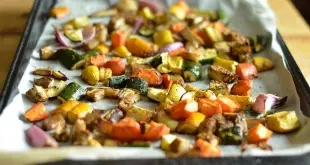Smoke and mirrors: how the food industry tries to confuse us about sugar
So we’ve all seen it. “No sugar added!,” “Sugar free!” What does it all mean?
Here’s the breakdown:
- Sugar free means there is no sugar of any kind (no sucrose, no lactose, no fructose, no maltose). Usually there is a sugar substitute in these products and the ingredients list should tell you which. If Splenda is included, usually it is on the front label with the Splenda symbol.
- No Sugar Added – means that the product only uses naturally occurring sugars and no table sugar. For these foods, you really need to check the nutritional label to find out how much sugar there is per serving, because no sugar added foods can still have quite a bit of sugar in them.
How to know if something is safe
Unfortunately, since everybody’s body is different, there is no hard and fast rule. Some folks do fine with sugar and sugar alcohols, some only dump on table sugar and some dump on every and any kind of sugar.
We advise the following:
- If you don’t know if you dump, always go for a relatively low sugar count and use products with naturally occurring sugars
- With things like flavored yogurt or cottage cheese (and both varieties that list “fruit on the bottom”) check the label (well…always check the label…but still…). These products are usually fairly high in sugar.
- Wherever possible, get plain products and sweeten them yourself (such as yogurt and cottage cheese. The cottage cheese with fruit added usually has added sugar)
- When buying canned fruits, look for ones packed in water. The food industry uses the term “light syrup” sometimes. While light syrup has less sugar than regular canned fruit syrup, it probably still has more than you want. Fruits packed in water will have a sugar count on the nutrition label, but the sugar is most exclusively likely from the fructose in the fruit.
- When buying things like jelly, look for the Splenda symbol, or for it to say “No Sugar Added.” We, personally, would be suspicious of any product that claims it is made with real fruit but is also sugar free. As you remember from part two, fruit contains fructose, or fruit sugar, so if your fruit products say they are sugar-free, go STRAIGHT to the label and investigate!
- If you have done all your investigating and STILL can’t tell where the sugar comes from, DON’T BUY IT!!!
So in summary, here are the most important things to remember about being on guard for sugar in food:
- If something is sugar-free, it should have no sugar of any kind in it, but it still may have sugar alcohols, which can still affect the body
- If something is no-sugar added, it should ONLY have naturally occurring sugars (usually from fruit or milk) in it, and it still may have sugar alcohols, which can still have an effect on the body
Previous: Part Three – the Nutrition Label
 Bariatric Foodie Play with your food
Bariatric Foodie Play with your food



